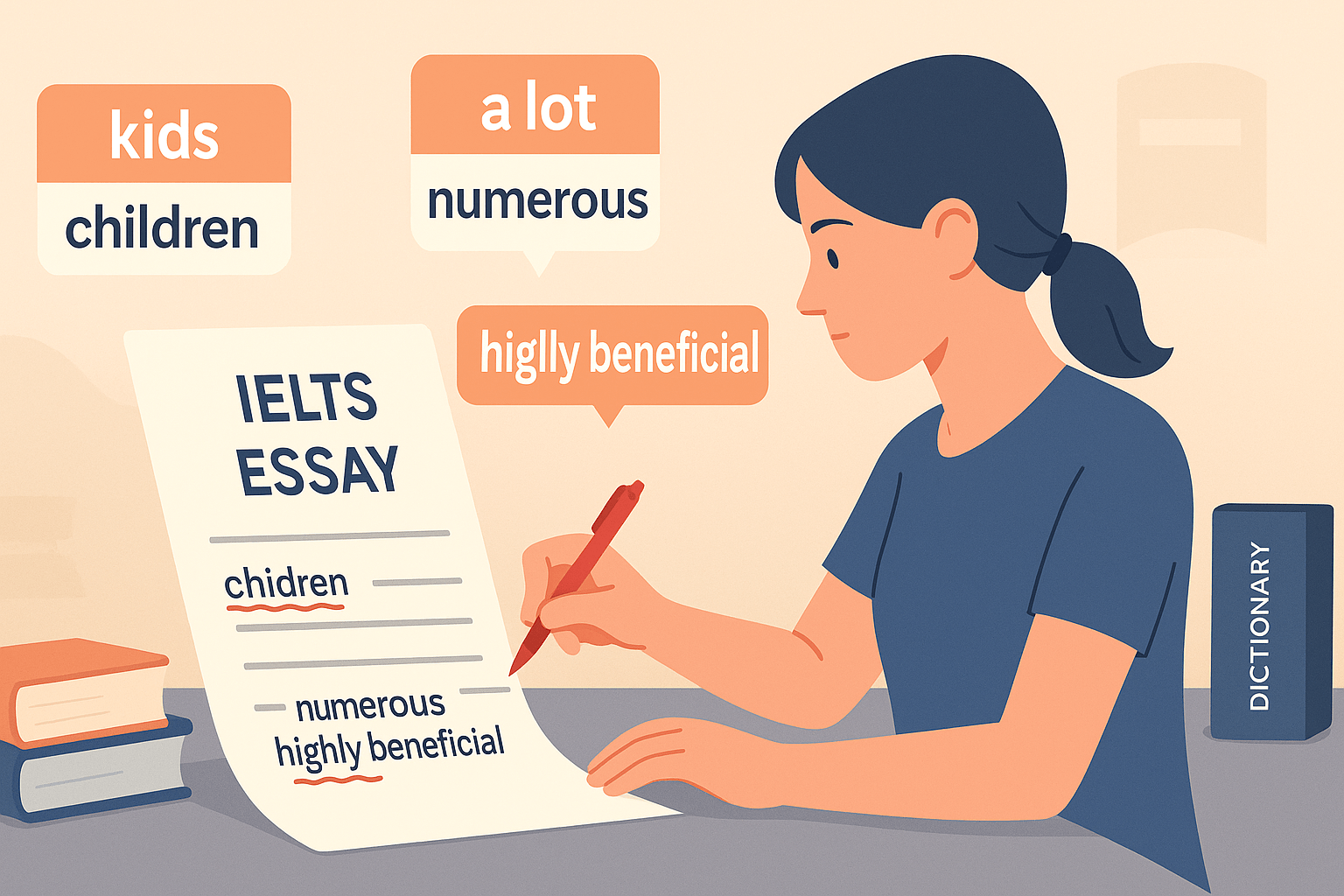If you’re aiming for Band 7 or higher in IELTS Writing Task 1, mastering IELTS Process Diagram vocabulary is essential. Many students struggle with process diagrams because they require clear descriptions, passive structures, and precise vocabulary — not just numbers or comparisons.
In this blog, I’ll guide you through:
- The types of process diagrams you might face
- Essential verbs and connectors for describing each stage
- Passive voice structures that sound formal and academic
- A real student success story and tips to boost your score
By the end, you’ll have the exact words and strategies to confidently write about any process diagram.
Understanding the IELTS Process Diagram Task
Before you dive into vocabulary, you need to understand what makes process diagrams unique in IELTS Writing Task 1.
Unlike line graphs or bar charts, which involve comparing data, process diagrams show how something works step by step. Common types include:
- Natural processes: The water cycle, photosynthesis, life cycles
- Manufacturing: Cement production, brick-making, recycling
- Mechanical or industrial processes: Electricity generation, plastic processing
Your task is not to explain the science behind it, but to describe the sequence accurately using formal English.
What the Examiner Looks For
The IELTS examiner will score your process diagram response based on:
- Task Achievement – Did you summarize the main stages?
- Coherence and Cohesion – Does your description flow logically?
- Lexical Resource – Are you using varied and precise vocabulary?
- Grammatical Range and Accuracy – Are your sentences clear and mostly in passive voice?
💡 Tip: Examiners don’t want to see “Then it goes to the next thing.” Instead, write:
“The mixture is transported to the cooling chamber, where it undergoes filtration.”
Essential IELTS Process Diagram Vocabulary
To score Band 7 or higher, focus on three key areas:
action verbs, connectors, and passive voice.
1. Action Verbs for Describing Processes
These verbs help you describe what happens at each stage.
| Basic Word | Band 7+ Alternative |
|---|---|
| go | flow, move, pass through |
| make | produce, generate, create |
| take | collect, extract, gather |
| clean | filter, purify, refine |
| change | transform, convert, process |
More Advanced Verbs to Use:
- begins with / starts with
- enters / flows into / passes through
- is collected / is gathered
- undergoes / is processed
- separates / divides
- is filtered / is refined
- is stored / is packaged
- ends with / finishes with
Example sentence:
“The water flows through a series of pipes and is filtered before it is stored in a tank.”
2. Connectors and Sequence Words
Good connectors make your description coherent and easy to follow.
- First / Firstly
- Then / Next
- After that / Following this
- Subsequently
- In the next stage
- Finally / At the end
Example sentence:
“First, the raw materials are collected. Subsequently, they are heated in a furnace. Finally, the product is packaged.”
💡 Tip: Avoid using “then” repeatedly. Mix simple and advanced connectors to show range.
3. Passive Voice for Formal Style
Process diagrams are best described in the passive voice, because the doer of the action is often unimportant or unknown.
Common Passive Structures:
- is heated / is cooled
- are transported / are stored
- is filtered / is processed
- are packaged / are prepared
Example sentence:
“The mixture is crushed, and the resulting powder is heated to a high temperature.”
Student Success Story: How Sara Improved
One of my students, Sara, was stuck at Band 6 because her process descriptions sounded basic:
“They take the water. Then they do something. After that, it goes to the next part.”
The problem:
- Overused simple verbs: do, go
- No passive voice
- Weak connectors
After a week of practice, she rewrote her answer like this:
“First, the water is collected and filtered through a fine mesh. Subsequently, it is transported to the storage tank, where it undergoes purification.”
Result: She scored Band 7.5 in her next IELTS exam.
Step-by-Step Strategy to Describe Any Process Diagram
- Start with an Overview
- Paraphrase the question + give total stages
- Example:
“The diagram illustrates the process of brick production in seven stages, beginning with clay extraction and ending with delivery to shops.”
- Follow the Process Step by Step
- Use connectors to maintain logical order
- Focus on main actions, not tiny details
- Use Passive Voice and Process Vocabulary
- Example:
“The clay is dug up by a digger and transported to a roller, where it is crushed.”
- End with a Clear Final Stage
- Example:
“Finally, the finished bricks are packaged and delivered to retailers.”
Practice Task
Describe this (imaginary) process diagram:
The diagram shows how bottled water is produced, from collection to packaging.
Use at least 5 vocabulary items from this blog in your answer.
Final Tips for IELTS Process Diagram Vocabulary
- Focus on clarity, not complexity – formal and precise beats complicated words.
- Practice passive sentences – most process tasks require them.
- Use varied connectors – avoid repeating “then” or “after that.”
- Review real process diagrams – familiar shapes make writing easier.
Internal Resource to Explore
For a complete guide to all IELTS Writing Task 1 visuals, including maps, charts, and tables, visit:
👉 IELTS Writing Task 1 Vocabulary Complete Guide
Helpful External Resources
- IELTS.org – Official test information and free samples
- British Council: Take IELTS – Tips and practice resources
- IDP IELTS – Official prep and booking site
Mastering IELTS Process Diagram vocabulary will transform your Task 1 writing. Focus on clear verbs, passive voice, and logical connectors, and you’ll move closer to your Band 7+ score.




